#Korean PP
Photo

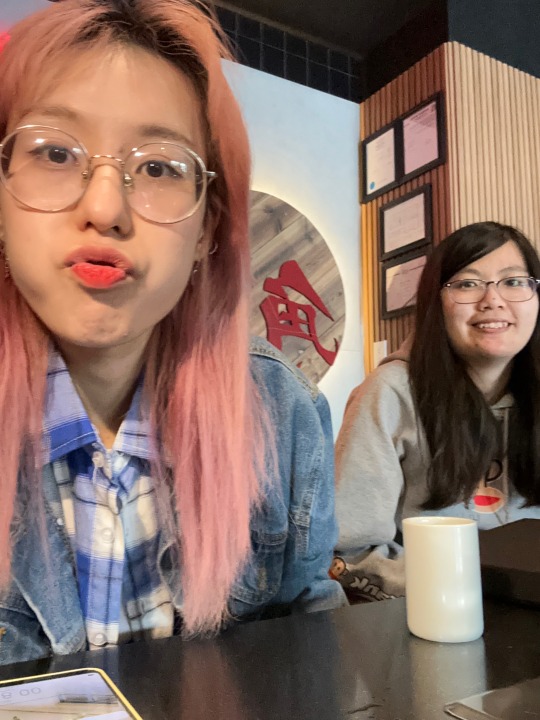

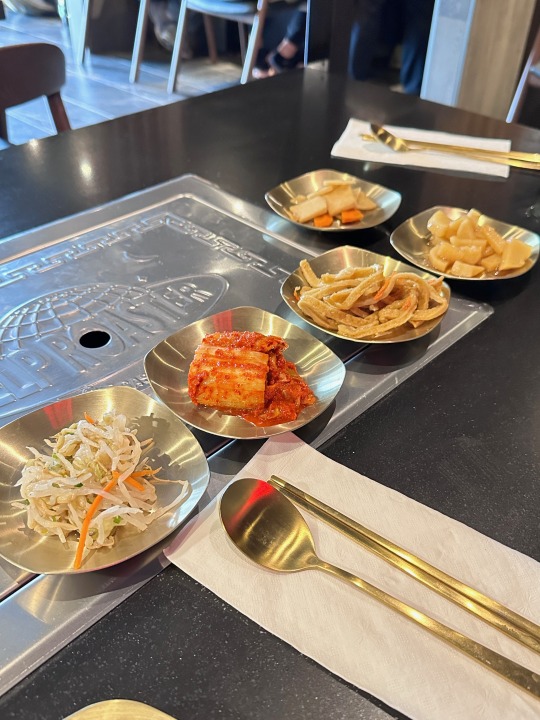

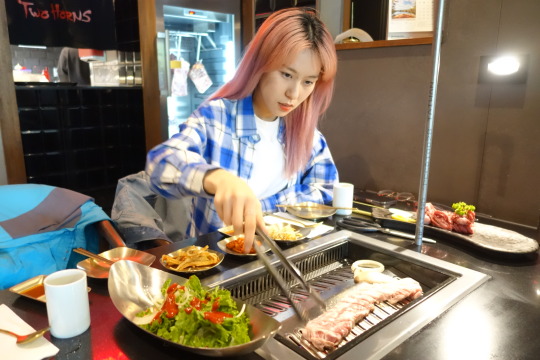

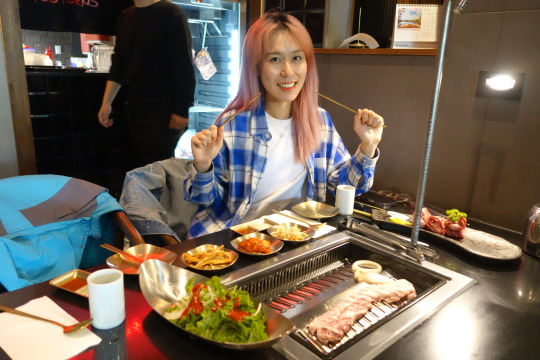
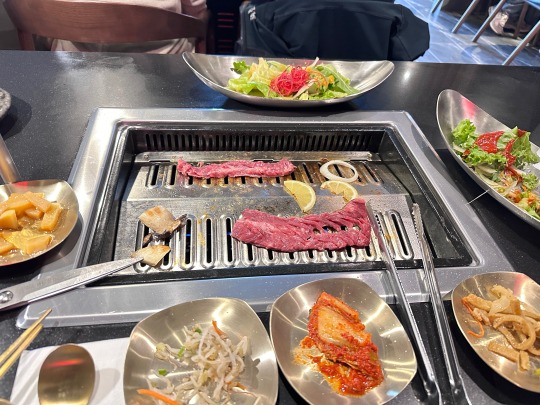
Week 18.8/52: May 1st - May 7th 2023 | KBBQ!!!!!
At last, I ate bbq after almost 3 months. I always eat bbq with Vicky now LOL. We went to Two Horns BBQ, a new place and they were doing 10% off. We ordered one pork belly and one beef fingers. Overall very yum and filling thanks to the salads and side dishes. The only thing is that we had to sit next to each other instead of across... there was no seats across and no space either. Very weird design/layout. It is kind of sad and weird but food is decent regardless. Just happy to satisfy my KBBQ craving.
7 notes
·
View notes
Text


5/5/22 | @holland_vvv: Last night, I was walking around Itaewon with my manager and a friend. Suddenly, a stranger man approached me and hit me on the face twice, calling me ‘a dirty gay’. Now I have a scar on my face and I’m going to the hospital soon. This is obviously a hate crime. The fact that my sexuality as gay is public should never expose myself to this kind of violence. Nor any other LGBT+ and all elders, women and minorities in this world. This happening in 2022 shows the sad reality of LGBT+ human rights.
I reported to the police and I hope the case is well solved.
This should never happen to anybody in this world, no matter who you are. I wish our world is filled with more love and hope rather than hate and violence.
#holland#homophobia#homophobic violence tw#violence tw#sigh#he was attacked and it is more than possible it was because he's visible again as one of the few korean out celebrities this#is fucked up fr i hope it doesn't repeat but doesn't sk really not have protections for gay people p?#im#ocean likes me#kpop#pp
66 notes
·
View notes
Text
youtube
Whatever this vibe is, I’m here for it
2 notes
·
View notes
Text
got tagged by @nito-onna to post my top 5 on repeat songs hehe
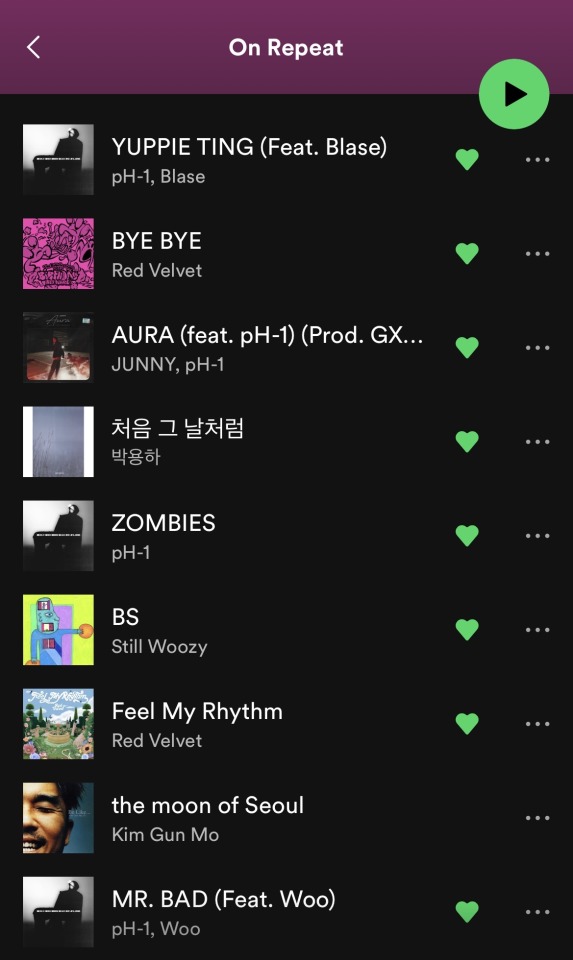
#im cracking up at the old korean songs...#just like the first day - park yong-ha is the one written in korean#pp#tag#thank you for tagging!!!#this is really what ive been listening to on the way to and from campus hahaha
4 notes
·
View notes
Text
Shikigami and onmyōdō through history: truth, fiction and everything in between
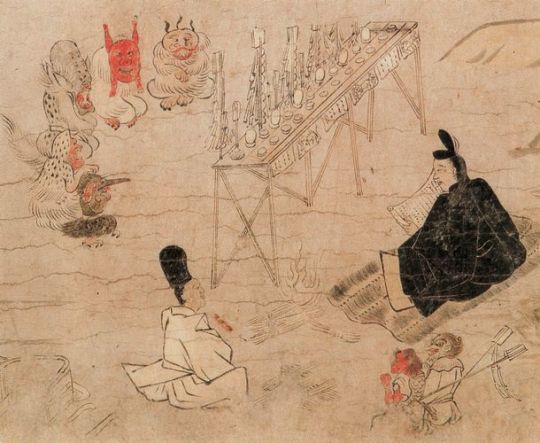
Abe no Seimei exorcising disease spirits (疫病神, yakubyōgami), as depicted in the Fudō Riyaku Engi Emaki. Two creatures who might be shikigami are visible in the bottom right corner (wikimedia commons; identification following Bernard Faure’s Rage and Ravage, pp. 57-58)
In popular culture, shikigami are basically synonymous with onmyōdō. Was this always the case, though? And what is a shikigami, anyway? These questions are surprisingly difficult to answer. I’ve been meaning to attempt to do so for a longer while, but other projects kept getting in the way. Under the cut, you will finally be able to learn all about this matter.
This isn’t just a shikigami article, though. Since historical context is a must, I also provide a brief history of onmyōdō and some of its luminaries. You will also learn if there were female onmyōji, when stars and time periods turn into deities, what onmyōdō has to do with a tale in which Zhong Kui became a king of a certain city in India - and more!
The early days of onmyōdō
In order to at least attempt to explain what the term shikigami might have originally entailed, I first need to briefly summarize the history of onmyōdō (陰陽道). This term can be translated as “way of yin and yang”, and at the core it was a Japanese adaptation of the concepts of, well, yin and yang, as well as the five elements. They reached Japan through Daoist and Buddhist sources. Daoism itself never really became a distinct religion in Japan, but onmyōdō is arguably among the most widespread adaptations of its principles in Japanese context.

Kibi no Makibi, as depicted by Yoshitoshi Tsukioka (wikimedia commons)
It’s not possible to speak of a singular founder of onmyōdō comparable to the patriarchs of Buddhist schools. Bernard Faure notes that in legends the role is sometimes assigned to Kibi no Makibi, an eighth century official who spent around 20 years in China. While he did bring many astronomical treatises with him when he returned, this is ultimately just a legend which developed long after he passed away.
In reality onmyōdō developed gradually starting with the sixth century, when Chinese methods of divination and treatises dealing with these topics first reached Japan. Early on Buddhist monks from the Korean kingdom of Baekje were the main sources of this knowledge. We know for example that the Soga clan employed such a specialist, a certain Gwalleuk (観勒; alternatively known under the Japanese reading of his name, Kanroku).
Obviously, divination was viewed as a very serious affair, so the imperial court aimed to regulate the continental techniques in some way. This was accomplished by emperor Tenmu with the formation of the onmyōryō (陰陽寮), “bureau of yin and yang” as a part of the ritsuryō system of governance. Much like in China, the need to control divination was driven by the fears that otherwise it would be used to legitimize courtly intrigues against the emperor, rebellions and other disturbances.
Officials taught and employed by onmyōryō were referred to as onmyōji (陰陽師). This term can be literally translated as “yin-yang master”. In the Nara period, they were understood essentially as a class of public servants. Their position didn’t substantially differ from that of other specialists from the onmyōryō: calendar makers, officials responsible for proper measurement of time and astrologers. The topics they dealt with evidently weren’t well known among commoners, and they were simply typical members of the literate administrative elite of their times.
Onmyōdō in the Heian period: magic, charisma and nobility
The role of onmyōji changed in the Heian period. They retained the position of official bureaucratic diviners in employ of the court, but they also acquired new duties. The distinction between them and other onmyōryō officials became blurred. Additionally their activity extended to what was collectively referred to as jujutsu (呪術), something like “magic” though this does not fully reflect the nuances of this term. They presided over rainmaking rituals, purification ceremonies, so-called “earth quelling”, and establishing complex networks of temporal and directional taboos.

A Muromachi period depiction of Abe no Seimei (wikimedia commons)
The most famous historical onmyōji like Kamo no Yasunori and his student Abe no Seimei were active at a time when this version of onmyōdō was a fully formed - though obviously still evolving - set of practices and beliefs. In a way they represented a new approach, though - one in which personal charisma seemed to matter just as much, if not more, than official position. This change was recognized as a breakthrough by at least some of their contemporaries. For example, according to the diary of Minamoto no Tsuneyori, the Sakeiki (左經記), “in Japan, the foundations of onmyōdō were laid by Yasunori”.
The changes in part reflected the fact that onmyōji started to be privately contracted for various reasons by aristocrats, in addition to serving the state. Shin’ichi Shigeta notes that it essentially turned them from civil servants into tradespeople. However, he stresses they cannot be considered clergymen: their position was more comparable to that of physicians, and there is no indication they viewed their activities as a distinct religion. Indeed, we know of multiple Heian onmyōji, like Koremune no Fumitaka or Kamo no Ieyoshi, who by their own admission were devout Buddhists who just happened to work as professional diviners.
Shin’ichi Shigeta notes is evidence that in addition to the official, state-sanctioned onmyōji, “unlicensed” onmyōji who acted and dressed like Buddhist clergy, hōshi onmyōji (法師陰陽師) existed. The best known example is Ashiya Dōman, a mainstay of Seimei legends, but others are mentioned in diaries, including the famous Pillow Book. It seems nobles particularly commonly employed them to curse rivals. This was a sphere official onmyōji abstained from due to legal regulations. Curses were effectively considered crimes, and government officials only performed apotropaic rituals meant to protect from them.
The Heian period version of onmyōdō captivated the imagination of writers and artists, and its slightly exaggerated version present in classic literature like Konjaku Monogatari is essentially what modern portrayals in fiction tend to go back to.
Medieval onmyōdō: from abstract concepts to deities

Gozu Tennō (wikimedia commons)
Further important developments occurred between the twelfth and fourteenth centuries. This period was the beginning of the Japanese “middle ages” which lasted all the way up to the establishment of the Tokugawa shogunate. The focus in onmyōdō in part shifted towards new, or at least reinvented, deities, such as calendarical spirits like Daishōgun (大将軍) and Ten’ichijin (天一神), personifications of astral bodies and concepts already crucial in earlier ceremonies. There was also an increased interest in Chinese cosmological figures like Pangu, reimagined in Japan as “king Banko”. However, the most famous example is arguably Gozu Tennō, who you might remember from my Susanoo article.
The changes in medieval onmyōdō can be described as a process of convergence with esoteric Buddhism. The points of connection were rituals focused on astral and underworld deities, such as Taizan Fukun or Shimei (Chinese Siming). Parallels can be drawn between this phenomenon and the intersection between esoteric Buddhism and some Daoist schools in Tang China. Early signs of the development of a direct connection between onmyōdō and Buddhism can already be found in sources from the Heian period, for example Kamo no Yasunori remarked that he and other onmyōji depend on the same sources to gain proper understanding of ceremonies focused on the Big Dipper as Shingon monks do.
Much of the information pertaining to the medieval form of onmyōdō is preserved in Hoki Naiden (ほき内伝; “Inner Tradition of the Square and the Round Offering Vessels”), a text which is part divination manual and part a collection of myths. According to tradition it was compiled by Abe no Seimei, though researchers generally date it to the fourteenth century. For what it’s worth, it does seem likely its author was a descendant of Seimei, though.
Outside of specialized scholarship Hoki Naiden is fairly obscure today, but it’s worth noting that it was a major part of the popular perception of onmyōdō in the Edo period. A novel whose influence is still visible in the modern image of Seimei, Abe no Seimei Monogatari (安部晴明物語), essentially revolves around it, for instance.
Onmyōdō in the Edo period: occupational licensing
Novels aside, the first post-medieval major turning point for the history of onmyōdō was the recognition of the Tsuchimikado family as its official overseers in 1683. They were by no means new to the scene - onmyōji from this family already served the Ashikaga shoguns over 250 years earlier. On top of that, they were descendants of the earlier Abe family, the onmyōji par excellence. The change was not quite the Tsuchimikado’s rise, but rather the fact the government entrusted them with essentially regulating occupational licensing for all onmyōji, even those who in earlier periods existed outside of official administration.
As a result of the new policies, various freelance practitioners could, at least in theory, obtain a permit to perform the duties of an onmyōji. However, as the influence of the Tsuchimikado expanded, they also sought to oblige various specialists who would not be considered onmyōji otherwise to purchase licenses from them. Their aim was to essentially bring all forms of divination under their control. This extended to clergy like Buddhist monks, shugenja and shrine priests on one hand, and to various performers like members of kagura troupes on the other.
Makoto Hayashi points out that while throughout history onmyōji has conventionally been considered a male occupation, it was possible for women to obtain licenses from the Tsuchimikado. Furthermore, there was no distinct term for female onmyōji, in contrast with how female counterparts of Buddhist monks, shrine priests and shugenja were referred to with different terms and had distinct roles defined by their gender.
As far as I know there’s no earlier evidence for female onmyōji, though, so it’s safe to say their emergence had a lot to do with the specifics of the new system. It seems the poems of the daughter of Kamo no Yasunori (her own name is unknown) indicate she was familiar with yin-yang theory or at least more broadly with Chinese philosophy, but that’s a topic for a separate article (stay tuned), and it's not quite the same, obviously.
The Tsuchimikado didn’t aim to create a specific ideology or systems of beliefs. Therefore, individual onmyōji - or, to be more accurate, individual people with onmyōji licenses - in theory could pursue new ideas. This in some cases lead to controversies: for instance, some of the people involved in the (in)famous 1827 Osaka trial of alleged Christians (whether this label really is applicable is a matter of heated debate) were officially licensed onmyōji. Some of them did indeed possess translated books written by Portuguese missionaries, which obviously reflected Catholic outlook. However, Bernard Faure suggests that some of the Edo period onmyōji might have pursued Portuguese sources not strictly because of an interest in Catholicism but simply to obtain another source of astronomical knowledge.
The legacy of onmyōdō
In the Meiji period, onmyōdō was banned alongside shugendō. While the latter tradition experienced a revival in the second half of the twentieth century, the former for the most part didn’t. However, that doesn’t mean the history of onmyōdō ends once and for all in the second half of the nineteenth century.
Even today in some parts of Japan there are local religious traditions which, while not identical with historical onmyōdō, retain a considerable degree of influence from it. An example often cited in scholarship is Izanagi-ryū (いざなぎ流) from the rural Monobe area in the Kōchi Prefecture. Mitsuki Ueno stresses that the occasional references to Izanagi-ryū as “modern onmyōdō” in literature from the 1990s and early 2000s are inaccurate, though. He points out they downplay the unique character of this tradition, and that it shows a variety of influences. Similar arguments have also been made regarding local traditions from the Chūgoku region.
Until relatively recently, in scholarship onmyōdō was basically ignored as superstition unworthy of serious inquiries. This changed in the final decades of the twentieth century, with growing focus on the Japanese middle ages among researchers. The first monographs on onmyōdō were published in the 1980s. While it’s not equally popular as a subject of research as esoteric Buddhism and shugendō, formerly neglected for similar reasons, it has nonetheless managed to become a mainstay of inquiries pertaining to the history of religion in Japan.
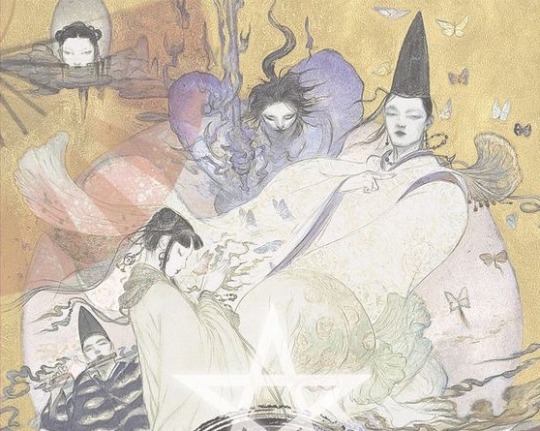
Yoshitaka Amano's illustration of Baku Yumemakura's fictionalized portrayal of Abe no Seimei (right) and other characters from his novels (reproduced here for educational purposes only)
Of course, it’s also impossible to talk about onmyōdō without mentioning the modern “onmyōdō boom”. Starting with the 1980s, onmyōdō once again became a relatively popular topic among writers. Novel series such as Baku Yumemakura’s Onmyōji, Hiroshi Aramata’s Teito Monogatari or Natsuhiko Kyōgoku’s Kyōgōkudō and their adaptations in other media once again popularized it among general audiences. Of course, since these are fantasy or mystery novels, their historical accuracy tends to vary (Yumemakura in particular is reasonably faithful to historical literature, though). Still, they have a lasting impact which would be impossible to accomplish with scholarship alone.
Shikigami: historical truth, historical fiction, or both?
You might have noticed that despite promising a history of shikigami, I haven’t used this term even once through the entire crash course in history of onmyōdō. This was a conscious choice. Shikigami do not appear in any onmyōdō texts, even though they are a mainstay of texts about onmyōdō, and especially of modern literature involving onmyōji.
It would be unfair to say shikigami and their prominence are merely a modern misconception, though. Virtually all of the famous legends about onmyōji feature shikigami, starting with the earliest examples from the eleventh century. Based on Konjaku Monogatari, there evidently was a fascination with shikigami at the time of its compilation. Fujiwara no Akihira in the Shinsarugakuki treats the control of shikigami as an essential skill of an onmyōji, alongside the abilities to “freely summon the twelve guardian deities, call thirty-six types of wild birds (...), create spells and talismans, open and close the eyes of kijin (鬼神; “demon gods”), and manipulate human souls”.
It is generally agreed that such accounts, even though they belong to the realm of literary fiction, can shed light on the nature and importance of shikigami. They ultimately reflect their historical context to some degree. Furthermore, it is not impossible that popular understanding of shikigami based on literary texts influenced genuine onmyōdō tradition. It’s worth pointing out that today legends about Abe no Seimei involving them are disseminated by two contemporary shrines dedicated to him, the Seimei Shrine (晴明神社) in Kyoto and the Abe no Seimei Shrine (安倍晴明神社) in Osaka. Interconnected networks of exchange between literature and religious practice are hardly a unique or modern phenomenon.
However, even with possible evidence from historical literature taken into account, it is not easy to define shikigami. The word itself can be written in three different ways: 式神 (or just 式), 識神 and 職神, with the first being the default option. The descriptions are even more varied, which understandably lead to the rise of numerous interpretations in modern scholarship. Carolyn Pang in her recent treatments of shikigami, which you can find in the bibliography, has recently divided them into five categories. I will follow her classification below.
Shikigami take 1: rikujin-shikisen
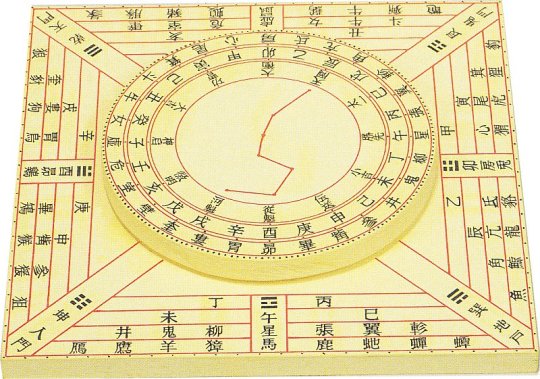
An example of shikiban, the divination board used in rikujin-shikisen (Museum of Kyoto, via onmarkproductions.com; reproduced here for educational purposes only)
A common view is that shikigami originate as a symbolic representation of the power of shikisen (式占) or more specifically rikujin-shikisen (六壬式占), the most common form of divination in onmyōdō. It developed from Chinese divination methods in the Nara period, and remained in the vogue all the way up to the sixteenth century, when it was replaced by ekisen (易占), a method derived from the Chinese Book of Changes.
Shikisen required a special divination board known as shikiban (式盤), which consists of a square base, the “earth panel” (地盤, jiban), and a rotating circle placed on top of it, the “heaven panel” (天盤, tenban). The former was marked with twelve points representing the signs of the zodiac and the latter with representations of the “twelve guardians of the months” (十二月将, jūni-gatsushō; their identity is not well defined). The heaven panel had to be rotated, and the diviner had to interpret what the resulting combination of symbols represents. Most commonly, it was treated as an indication whether an unusual phenomenon (怪/恠, ke) had positive or negative implications.
It’s worth pointing out that in the middle ages the shikiban also came to be used in some esoteric Buddhist rituals, chiefly these focused on Dakiniten, Shōten and Nyoirin Kannon. However, they were only performed between the late Heian and Muromachi periods, and relatively little is known about them. In most cases the divination board was most likely modified to reference the appropriate esoteric deities.
Shikigami take 2: cognitive abilities
While the view that shikigami represented shikisen is strengthened by the fact both terms share the kanji 式, a variant writing, 識神, lead to the development of another proposal. Since the basic meaning of 識 is “consciousness”, it is sometimes argued that shikigami were originally an “anthropomorphic realization of the active psychological or mental state”, as Caroline Pang put it - essentially, a representation of the will of an onmyōji. Most of the potential evidence in this case comes from Buddhist texts, such as Bosatsushotaikyō (菩薩処胎経).
However, Bernard Faure assumes that the writing 識神 was a secondary reinterpretation, basically a wordplay based on homonymy. He points out the Buddhist sources treat this writing of shikigami as a synonym of kushōjin (倶生神). This term can be literally translated as “deities born at the same time”. Most commonly it designates a pair of minor deities who, as their name indicates, come into existence when a person is born, and then records their deeds through their entire life. Once the time for Enma’s judgment after death comes, they present him with their compiled records. It has been argued that they essentially function like a personification of conscience.
Shikigami take 3: energy
A further speculative interpretation of shikigami in scholarship is that this term was understood as a type of energy present in objects or living beings which onmyōji were believed to be capable of drawing out and harnessing to their ends. This could be an adaptation of the Daoist notion of qi (氣). If this definition is correct, pieces of paper or wooden instruments used in purification ceremonies might be examples of objects utilized to channel shikigami.
The interpretation of shikigami as a form of energy is possibly reflected in Konjaku Monogatari in the tale The Tutelage of Abe no Seimei under Tadayuki. It revolves around Abe no Seimei’s visit to the house of the Buddhist monk Kuwanten from Hirosawa. Another of his guests asks Seimei if he is capable of killing a person with his powers, and if he possesses shikigami. He affirms that this is possible, but makes it clear that it is not an easy task. Since the guests keep urging him to demonstrate nonetheless, he promptly demonstrates it using a blade of grass. Once it falls on a frog, the animal is instantly crushed to death. From the same tale we learn that Seimei’s control over shikigami also let him remotely close the doors and shutters in his house while nobody was inside.
Shikigami take 4: curse
As I already mentioned, arts which can be broadly described as magic - like the already mentioned jujutsu or juhō (呪法, “magic rituals”) - were regarded as a core part of onmyōji’s repertoire from the Heian period onward. On top of that, the unlicensed onmyōji were almost exclusively associated with curses. Therefore, it probably won’t surprise you to learn that yet another theory suggests shikigami is simply a term for spells, curses or both. A possible example can be found in Konjaku Monogatari, in the tale Seimei sealing the young Archivist Minor Captains curse - the eponymous curse, which Seimei overcomes with protective rituals, is described as a shikigami.

Kunisuda Utagawa's illustration of an actor portraying Dōman in a kabuki play (wikimedia commons)
Similarities between certain descriptions of shikigami and practices such as fuko (巫蠱) and goraihō (五雷法) have been pointed out. Both of these originate in China. Fuko is the use of poisonous, venomous or otherwise negatively perceived animals to create curses, typically by putting them in jars, while goraihō is the Japanese version of Daoist spells meant to control supernatural beings, typically ghosts or foxes. It’s worth noting that a legend according to which Dōman cursed Fujiwara no Michinaga on behalf of lord Horikawa (Fujiwara no Akimitsu) involves him placing the curse - which is itself not described in detail - inside a jar.
Mitsuki Ueno notes that in the Kōchi Prefecture the phrase shiki wo utsu, “to strike with a shiki”, is still used to refer to cursing someone. However, shiki does not necessarily refer to shikigami in this context, but rather to a related but distinct concept - more on that later.
Shikigami take 5: supernatural being
While all four definitions I went through have their proponents, yet another option is by far the most common - the notion of shikigami being supernatural beings controlled by an onmyōji. This is essentially the standard understanding of the term today among general audiences. Sometimes attempts are made to identify it with a specific category of supernatural beings, like spirits (精霊, seirei), kijin or lesser deities (下級神, kakyū shin). However, none of these gained universal support. Generally speaking, there is no strong indication that shikigami were necessarily imagined as individualized beings with distinct traits.
The notion of shikigami being supernatural beings is not just a modern interpretation, though, for the sake of clarity. An early example where the term is unambiguously used this way is a tale from Ōkagami in which Seimei sends a nondescript shikigami to gather information. The entity, who is not described in detail, possesses supernatural skills, but simultaneously still needs to open doors and physically travel.
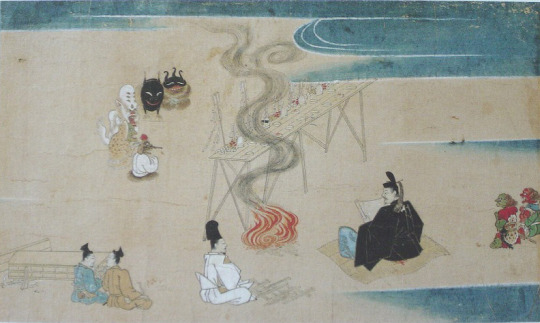
An illustration from Nakifudō Engi Emaki (wikimedia commons)
In Genpei Jōsuiki there is a reference to Seimei’s shikigami having a terrifying appearance which unnerved his wife so much he had to order the entities to hide under a bride instead of residing in his house. Carolyn Pang suggests that this reflects the demon-like depictions from works such as Abe no Seimei-kō Gazō (安倍晴明公画像; you can see it in the Heian section), Fudōriyaku Engi Emaki and Nakifudō Engi Emaki.
Shikigami and related concepts
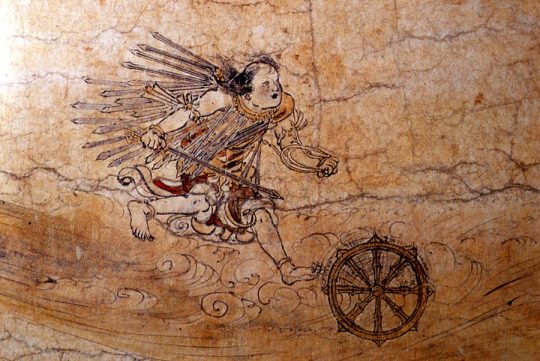
A gohō dōji, as depicted in the Shigisan Engi Emaki (wikimedia commons)
The understanding of shikigami as a “spirit servant” of sorts can be compared with the Buddhist concept of minor protective deities, gohō dōji (護法童子; literally “dharma-protecting lads”). These in turn were just one example of the broad category of gohō (護法), which could be applied to virtually any deity with protective qualities, like the historical Buddha’s defender Vajrapāṇi or the Four Heavenly Kings.
A notable difference between shikigami and gohō is the fact that the former generally required active summoning - through chanting spells and using mudras - while the latter manifested on their own in order to protect the pious. Granted, there are exceptions. There is a well attested legend according to which Abe no Seimei’s shikigami continued to protect his residence on own accord even after he passed away. Shikigami acting on their own are also mentioned in Zoku Kojidan (続古事談). It attributes the political downfall of Minamoto no Takaakira (源高明; 914–98) to his encounter with two shikigami who were left behind after the onmyōji who originally summoned them forgot about them.
A degree of overlap between various classes of supernatural helpers is evident in texts which refer to specific Buddhist figures as shikigami. I already brought up the case of the kushōjin earlier. Another good example is the Tendai monk Kōshū’s (光宗; 1276–1350) description of Oto Gohō (乙護法). He is “a shikigami that follows us like the shadow follows the body. Day or night, he never withdraws; he is the shikigami that protects us” (translation by Bernard Faure). This description is essentially a reversal of the relatively common title “demon who constantly follow beings” (常随魔, jōzuima). It was applied to figures such as Kōjin, Shōten or Matarajin, who were constantly waiting for a chance to obstruct rebirth in a pure land if not placated properly.

The Twelve Heavenly Generals (Tokyo National Museum, via wikimedia commons)
A well attested group of gohō, the Twelve Heavenly Generals (十二神将, jūni shinshō), and especially their leader Konpira (who you might remember from my previous article), could be labeled as shikigami. However, Fujiwara no Akihira’s description of onmyōji skills evidently presents them as two distinct classes of beings.

A kuda-gitsune, as depicted in Shōzan Chomon Kishū by Miyoshi Shōzan (Waseda University History Museum; reproduced here for educational purposes only)
Granted, Akihira also makes it clear that controlling shikigami and animals are two separate skills. Meanwhile, there is evidence that in some cases animal familiars, especially kuda-gitsune used by iizuna (a term referring to shugenja associated with the cult of, nomen omen, Iizuna Gongen, though more broadly also something along the lines of “sorcerer”), were perceived as shikigami.
Beliefs pertaining to gohō dōji and shikigami seemingly merged in Izanagi-ryū, which lead to the rise of the notion of shikiōji (式王子; ōji, literally “prince”, can be another term for gohō dōji). This term refers to supernatural beings summoned by a ritual specialist (祈祷師, kitōshi) using a special formula from doctrinal texts (法文, hōmon). They can fulfill various functions, though most commonly they are invoked to protect a person, to remove supernatural sources of diseases, to counter the influence of another shikiōji or in relation to curses.
Tenkeisei, the god of shikigami
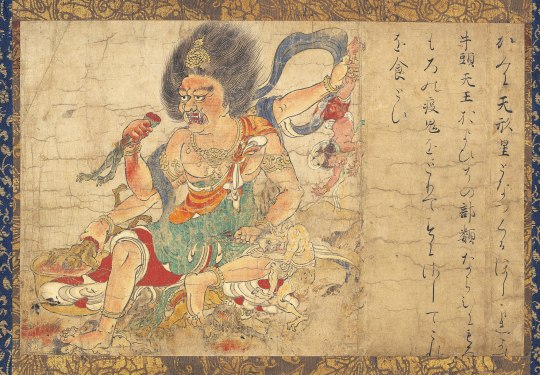
Tenkeisei (wikimedia commons)
The final matter which warrants some discussion is the unusual tradition regarding the origin of shikigami which revolves around a deity associated with this concept.
In the middle ages, a belief that there were exactly eighty four thousand shikigami developed. Their source was the god Tenkeisei (天刑星; also known as Tengyōshō). His name is the Japanese reading of Chinese Tianxingxing. It can be translated as “star of heavenly punishment”. This name fairly accurately explains his character. He was regarded as one of the so-called “baleful stars” (凶星, xiong xing) capable of controlling destiny. The “punishment” his name refers to is his treatment of disease demons (疫鬼, ekiki). However, he could punish humans too if not worshiped properly.
Today Tenkeisei is best known as one of the deities depicted in a series of paintings known as Extermination of Evil, dated to the end of the twelfth century. He has the appearance of a fairly standard multi-armed Buddhist deity. The anonymous painter added a darkly humorous touch by depicting him right as he dips one of the defeated demons in vinegar before eating him. Curiously, his adversaries are said to be Gozu Tennō and his retinue in the accompanying text. This, as you will quickly learn, is a rather unusual portrayal of the relationship between these two deities.
I’m actually not aware of any other depictions of Tenkeisei than the painting you can see above. Katja Triplett notes that onmyōdō rituals associated with him were likely surrounded by an aura of secrecy, and as a result most depictions of him were likely lost or destroyed. At the same time, it seems Tenkeisei enjoyed considerable popularity through the Kamakura period. This is not actually paradoxical when you take the historical context into account: as I outlined in my recent Amaterasu article, certain categories of knowledge were labeled as secret not to make their dissemination forbidden, but to imbue them with more meaning and value.
Numerous talismans inscribed with Tenkeisei’s name are known. Furthermore, manuals of rituals focused on him have been discovered. The best known of them, Tenkeisei-hō (天刑星法; “Tenkeisei rituals”), focuses on an abisha (阿尾捨, from Sanskrit āveśa), a ritual involving possession by the invoked deity. According to a legend was transmitted by Kibi no Makibi and Kamo no Yasunori. The historicity of this claim is doubtful, though: the legend has Kamo no Yasunori visit China, which he never did. Most likely mentioning him and Makibi was just a way to provide the text with additional legitimacy.
Other examples of similar Tenkeisei manuals include Tenkeisei Gyōhō (天刑星行法; “Methods of Tenkeisei Practice”) and Tenkeisei Gyōhō Shidai (天刑星行法次第; “Methods of Procedure for the Tenkeisei Practice”). Copies of these texts have been preserved in the Shingon temple Kōzan-ji.
The Hoki Naiden also mentions Tenkeisei. It equates him with Gozu Tennō, and explains both of these names refer to the same deity, Shōki (商貴), respectively in heaven and on earth. While Shōki is an adaptation of the famous Zhong Kui, it needs to be pointed out that here he is described not as a Tang period physician but as an ancient king of Rajgir in India. Furthermore, he is a yaksha, not a human. This fairly unique reinterpretation is also known from the historical treatise Genkō Shakusho.
Post scriptum
The goal of this article was never to define shikigami. In the light of modern scholarship, it’s basically impossible to provide a single definition in the first place. My aim was different: to illustrate that context is vital when it comes to understanding obscure historical terms. Through history, shikigami evidently meant slightly different things to different people, as reflected in literature. However, this meaning was nonetheless consistently rooted in the evolving perception of onmyōdō - and its internal changes. In other words, it reflected a world which was fundamentally alive.
The popular image of Japanese culture and religion is often that of an artificial, unchanging landscape straight from the “age of the gods”, largely invented in the nineteenth century or later to further less than noble goals. The case of shikigami proves it doesn’t need to be, though. The malleable, ever-changing image of shikigami, which remained a subject of popular speculation for centuries before reemerging in a similar role in modern times, proves that the more complex reality isn’t necessarily any less interesting to new audiences.
Bibliography
Bernard Faure, A Religion in Search of a Founder?
Idem, Rage and Ravage (Gods of Medieval Japan vol. 3)
Makoto Hayashi, The Female Christian Yin-Yang Master
Jun’ichi Koike, Onmyōdō and Folkloric Culture: Three Perspectives for the Development of Research
Irene H. Lin, Child Guardian Spirits (Gohō Dōji) in the Medieval Japanese Imaginaire
Yoshifumi Nishioka, Aspects of Shikiban-Based Mikkyō Rituals
Herman Ooms, Yin-Yang's Changing Clientele, 600-800 (note there is n apparent mistake in one of the footnotes, I'm pretty sure the author wanted to write Mesopotamian astronomy originated 4000 years ago, not 4 millenia BCE as he did; the latter date makes little sense)
Carolyn Pang, Spirit Servant: Narratives of Shikigami and Onmyōdō Developments
Idem, Uncovering Shikigami. The Search for the Spirit Servant of Onmyōdō
Shin’ichi Shigeta, Onmyōdō and the Aristocratic Culture of Everyday Life in Heian Japan
Idem, A Portrait of Abe no Seimei
Katja Triplett, Putting a Face on the Pathogen and Its Nemesis. Images of Tenkeisei and Gozutennō, Epidemic-Related Demons and Gods in Medieval Japan
Mitsuki Umeno, The Origins of the Izanagi-ryū Ritual Techniques: On the Basis of the Izanagi saimon
Katsuaki Yamashita, The Characteristics of On'yōdō and Related Texts
117 notes
·
View notes
Text
GENSHIN IMPACT CHARACTERS I THINK ENHYPEN WOULD MAIN
warning : mild cursing, not proofread pls lmk if any mistakes!
word count : 671
notes : just a quick one because I haven't been posting alot lately

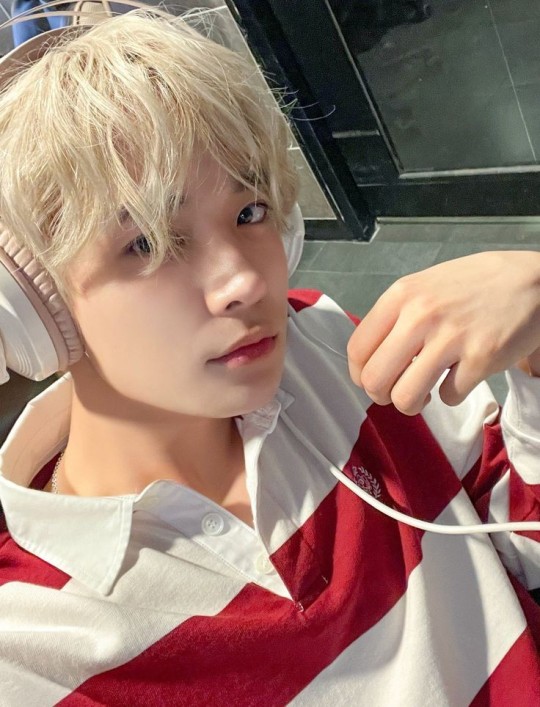

HEESEUNG : EULA LAWRENCE
Hmm, let's see
From his League of legends gameplay, he seems the type of guy to Main a character that easily does big damage.
He gives me eula vibes because who doesn't love eula??
Like i can imagine him just one shotting everything because she's a physical dps.
She's mommy material and if you disagree with me i.will.find.you
He probably hardcore invested in her imo, has a godly build and gets 36 stars in abyss.
rest of the members utc!
JAY : ZHONGLI
OKAY WE SAW THAT COMING.
I feel like he'd use his money and get him upto c6 and hardcore invest in him tbh.
Will shield you from any damage (his c2 cons) and will do big pp damage with his rock
i don't think he would invest into his weapon tho (even I wouldn't it's completely useless). Maybe he'd go for staff of homa for zhongli
i think he would just use his ult on other people for fun.
like imagine you're looking at your artifacts screen and out of nowhere you hear "I WILL HAVE ORDER!!"
like bestie did you just waste your ult like that...
JAKE : ARATAKI ITTO AND GOROU
TELL ME YOU DON'T SEE JAKE BEING AN ITTO MAIN LIKE MAN COME ON
Itto is just so goofy and cute and so is jakey and it's such a perfect match I CANNOT BELIEVE I THOUGHT OF THAT??? (In shock)
Itto is like so massively strong with his cow I swear
Need help? no worries a cow is here to help you!
No cuz i feel like he'll be so obsessed with itto's cow he's going to throw it on npcs and just laugh is ass off.
I also think he'll have alot of fun spamming itto's burst. i think we can all agree that his burst is very satisfying.
He wants to maximize it's damage, and the best character to help? gorou.
dog + a really good geo support = perfection for jake
he is def (pun intended) pulling for both their constellations for c6
SUNGHOON : KAEDEHARA KAZUHA
Have no idea how this thought popped up into my mind tbh it just did?
like kazuha is so calm and collected and peaceful i think it fits hoon really well in. way
and his dog gaeul's name means autumn in Korean. Ring a bell??
beside that i don't think he would seriously invest into him
kazuha is so broken at c0 itself, he won't bother as much but if he gets a constellation on accident he wouldn't mind.
SUNOO : NILOU
I was initially thinking nahida or diona even, but then i realised nilou would be so perfect??
no hear me out, she's cute she's gorgeous she dances she's so sskjejssjzjjsjzjehdwbhxdb AHHHH (sorry)
i feel like he would fall in love first sight of her no cap
he will be casual ab her me thinks, wouldn't try to get constellations really.
is afk most of the time staring at her beauty
JUNGWON : GANYU
HARD CARRYING LEADER!!!
tho he gives cat vibes (maybe diona or kirara) he also gives me "I will carry you but i will avoid you and the enemy like the plaque" if you get what I mean.
his build for her would be fucking crazy no cap.
like bro is hitting 100k every charged shot no buffs
wouldn't go for cons imo but will go mad crazy about building her
his aim would be so good tho, he never misses! (the same way he never misses to make my heart flutter)
NI-KI : HUTAO
we definitely saw this coming
the goofiness, the happiness, the crazyness and the urge to annoy zhongli (Jay) it all fits perfectly
he would definitely one tap everything that comes across his way
my boy is going all out with her c6 r5 (with Jay's money ofcourse)
i can also imagine him getting super mad when someone accidentally heals him like excuse tf me. did you just do that.
dw he'll get revenge by constantly burning the grass you're standing on 😘

disappeared from Tumblr for a while omg did someone miss me.
school has been hectic as hell as one of my most imp exams are coming up like kill me already

© leaderwon 2023. Do not copy translate or plagiarize in any platform.
Likes and reblogs are appreciated!!
#leaderwon#enhypen#jungwon#heeseung#jake#sunghoon#jake sim#enhypenfanfic#niki#genshin impact#eula lawrence#eula#zhongli#arataki itto#kazuha#kaedehara kazuha#nilou#ganyu#hutao#enhypen sunoo#enhypen x y/n#enhypen x reader#enhypen fluff#enhypen smau#enhypen comfort#enhypen fake texts#enhypen drabbles#enhypen imagines#enhypen reactions#enhypen x you
49 notes
·
View notes
Text
~ Monthly BL Breakdown: September 2023 ~
👻 Happy October!!! 🎃
Disclaimer: ALL shows can be streamed here or here, as well as on Youtube and other platforms. For more info on where to watch what, check out this post!
New breakdowns are coming at the end of every month - feel free to add stuff! -> previous breakdowns

What came out this month? (green = seen/currently watching)
🌟 Senior Love Me? Season 2 - September 1st (Thailand)
🌟 Naughty Babe - September 2nd (Thailand) ✅
🌟 Venus in the Sky - September 2nd (Thailand)
🌟 Marry Go Round - September 3rd (Thailand)
🌟 Where Your Eyes Linger (movie version with added scenes + commentary) - September 5th (South Korea)
🌟 Y Star Challenge (reality show) - September 8th (Thailand)
🌟 The Promise: Honeymoon Lost and Found - September 9th (Thailand)
🌟 Our Story - September 9th (Philippines)
🌟 Rerun (starring PP Krit) - September 13th (Thailand)
🌟 You Are Mine - September 15th (Taiwan)
🌟 Bump Up Business - September 15th (South Korea)
🌟 Wedding Plan Special Episode - September 16th (Thailand) ✅
🌟 Right Time, Right You - September 17th (Thailand)
🌟 Kimi ni wa Todokanai (I Can't Reach You) - September 27th (Japan)
🌟 Bon Appetit - September 27th (South Korea)
🌟 Absolute Zero - September 27th (Thailand)
Monthly likes/dislikes
❣️ Naughty Babe - I'm loving this so much lol it's so silly but the comedy is so brilliant and so far I'm enjoying it more than Cutie Pie lol. The story is interesting and MaxNat's acting has improved a lot since CP which is nice. Definitely an unexpected nice little gem and also a band-aid for the soul after the OF-trauma every Saturday dskjhf
👎🏻 ø
New series & movie announcements
🎥 Like - Date TBA (South Korea)
🎥 Live in Love - Date TBA (Thailand)
🎥 Spirit Reborn - Date TBA (Thailand)
🎥 Red Peafowl (starring Max N., Mek J., Boun N., Gun N., Yacht S., LongFrank & others) - Date TBA (Thailand)
🎥 Couple or Not - Date TBA (China)
🎥 Ossan's Love Season 3 - Coming January 2024 (Japan)
🎥 The Luminous Begins (Prequel to The Luminious Solution, starring Kaownah Kittipat) - Coming December 2023
Other news from the BL world
❗️ The upcoming Thai adaption of Cherry Magic will premiere in November as confirmed by the cast. The airing date has yet to be announced.
❗️ Actor Est Ravipon (LBC2, Naughty Babe) joined GMMTV.
❗️ The upcoming Thai BL 4 Minutes has been announced to air in early 2024. One of the main actors, Bible W., disclosed that shooting will begin in October and run until December. Several months back his acting partner Build J. dropped out of the production as a result of a defamation scandal. Further details, such as a recast for his role, as well as an airing date, are unknown.
❗️ Santa and Earth (My Only 12%) and EarthMix (ATOTS, MLC) respectively announced that they will be having another project together in 2024. Details are unknown.
❗️ GMMTV actor Gun Atthaphan won an award for "Outstanding Asian Star" at this year's Seoul International Drama Awards.
❗️ This year's GMMTV 2024 lineup event will take place on October 17th.
❗️ The cast for the upcoming Korean BL Jazz For Two was revealed: Song Han Gyeom (OMEGA X), Kim Jin Kwon & Ko Jae Hyun (To My Star), Byun Sung Tae (Happy Merry Ending) will be the main cast.
❗️ A third season for the Japanesse BL Ossan's Love was announced for January 2024.
❗️ At their event "Always More", WeTV announced their 2024 lineup. The following BL productions are included:
Monster Next Door
I Saw You In My Dream (WeTV x DeeHup)
Me And Who (WeTV x Domundi)
Knock Knock Boys (starring Seng W., Best V. and others)
❗️ MeMindY announced their next 2 BL projects:
Love Sea (adapted from an unreleased novel) - Coming 2024
Boy Next World (universe travel plot) - Coming 2024
Both series are adaptions from Mame's novels and will air in 2024. Earlier, FortPeat (Love in the Air) confirmed in a press conference that they will star in another one of Mame's projects, which led fans to believing they will appear in one of the 2 projects, along with BossNoeul. The official cast reveals will take place on October 3rd and 5th.
Upcoming series & movies for October
👉🏻 Sasaki to Miyano - October 1st (Japan, Netflix release)
👉🏻 If It's With You aka Even If I Fall In Love With You - October 5th (Japan)
👉🏻 What Did You Eat Yesterday? Season 2 - October 6th (Japan)
👉🏻 Lucky Love - October 15th (Thailand)
👉🏻 GMMTV2024 lineup event + press conference - October 17th (Thailand)
👉🏻 One Room Angel (manga adaption) - October 19th (Japan)
👉🏻 The Camp Fire - October 29th (Thailand)
👉🏻 Shadow - October 31st (Thailand)
👉🏻 Boys Like Boys (dating reality show) - October TBA (Taiwan)
👉🏻 Bump Up Business - October TBA (South Korea)
#doreens monthly bl breakdown#thai bl#bl drama#upcoming bl#update#bl news#bro the way just say yes i not part of the new mame lineup...... i have no words#like if its not happening then at least tell us????#so we can stop waiting + hoping like idiots#im so mad#but anyway#I'm heavily side-eying this knock knock boys business cuz like 💀💀💀 what in the world lmao#didnt think seng would go back to bl but here we are#im gonna tune in for sure#such a random cast#im in#reminds me of youre my king#which was disaster#but this looks kinda good lmao
62 notes
·
View notes
Text

Soldiers with the US 19th Infantry Regiment, 24th Infantry Division in a dug-in position on a hill during the Korean War. Two of them have captured PPS-43s. Early 1951.
48 notes
·
View notes
Text
WMMAP Volumes 3 & 4 (Traditional Chinese)
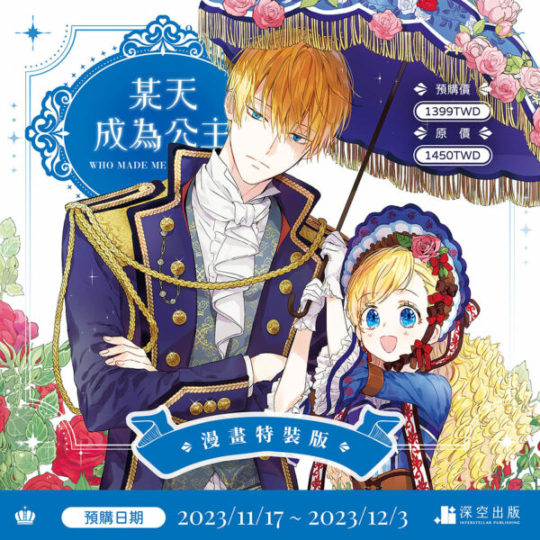


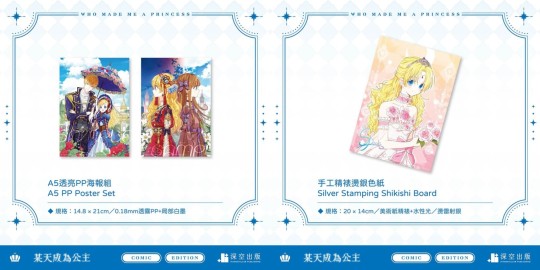




Interstellar Publishing has announced the pre-orders for their translation of WMMAP's manhwa (volumes 3 & 4, limited edition)!
✦ Price: NT$ 1,399
✦ Pre-order date: 11/17 (Friday) 19:00-12/3 (Sunday) 23:59 (GMT+8)
✦ Merch description:
❶ 【Comics】 "Who Made Me A Princess" Volume 03
❷ 【Comics】 "Who Made Me A Princess" Volume 04
❸ Print-bronzing Acrylic Panel | The Emperor
◆ Specifications: 13 × 19cm/2mm acrylic/machine printing + partial white ink + partial gold printing
◆ Art by Korean artist Spoon
❹ Starry Postcard Set|Collect beautiful moments
◆ Specifications: 10 × 14.5cm/240G Starry Card + White Cowhide Envelope
◆ Art by Korean artist Spoon
❺ A5 PP Poster Set|Princess's daily life
◆ Specifications: 14.8 × 21cm/0.18mm fog-proof PP + partial white ink
◆ Art by Korean artist Spoon
❻ Silver Stamping Shikishi Board|Princess’s Debutante
◆ Specifications: 20 × 14cm/Fine art paper mounting + water-based light/hot laser silver
◆ Art by Korean artist Spoon
❼ Silver Stamping Ticket Set|Lonely Black Wolf & Soft Charisma
◆ Specifications: 21 × 8cm/250P copper + hot stamped full version laser silver/broken diamond film OPP bag
◆ Art by Korean artist Spoon
❽ Matte Book Box
◆ Specifications: 16.5 × 22.5 × 4.5cm/Full-page hot stamping/300P white copper + matte P
◆ Art by Korean artist Spoon
✦.【Pre-order bonus】 ✦. ✦.✦
❶ 1 Shining Badge (1 piece)
◆ Specifications: 58mm/Tinplate
◆ Art by Korean artist Spoon
❷ 2 Card Stickers (2 pieces)
◆ Specifications: 8.5 × 5.4cm
◆ Art by Korean artist Spoon
❸ 1 Transparent Card
◆ Specifications: 10.5 × 14.5cm
◆ Art by Korean artist Spoon
✦.【Giveaways】 ✦. ✦.✦
❶ Bonus Posters (3 pieces at random)
◆ Specifications: 72.8 × 50.2cm/190P snow bronze
◆ Art by Korean artist Spoon
❷ Special-designed Paper Bag
◆ Specifications: 23 × 27.5 × 13cm/150P matte special copper
【Additional bonus for pre-ordering the novel & comic's special editions】
❶ 2 Transparent Cards
◆ Specifications: 10.5 x 14.5cm
#the box is really really beautiful#who made me a princess#i suddenly became a princess#suddenly became a princess one day#wmmap#sbap#sbapod#athy#athanasia de alger obelia#athanasia#claude de alger obelia#claude wmmap#wmmap claude#lucas wmmap#wmmap lucas#ijekiel alpheus#wmmap merch#jennette margarita
47 notes
·
View notes
Note
Is there a kind of story theme you like that you haven't seen from BL but want to?
I mean, if you are in certain circles you will be aware of my PP Krit as a genderqueer assassin drama dreams. But generally speaking, my story interests are wide and varied, and I feel like I'm starting to see the genre meet them in some significant ways. In the past 18 months alone we've gotten mafia/action, time travel, magical realism, family drama, slice of life, historical, musical comedy and melodrama, all at high quality. The only places I feel like the genre is yet to go into are murder mystery (MOD notwithstanding), serious sci fi/fantasy territory (it's dabbled, but hasn't gone full-out), and horror. I feel like when/if the Koreans finally join the party for real, the chances of these genres will go way up.
Another direction I'd really like to see the genre go in is more 'last love' stories as well. I love Moonlight Chicken, Old Fashioned Cupcake and What Did You Eat Yesterday? and as a known Old Bitch, I'd like to see more stories about finding and sustaining relationships in maturity; whether those are stories of discovery or recovery doesn't matter to me so much. I love watching the kids fall in love, it's relatable and nostalgic and delightful in some ways, but Moonlight Chicken's Jim is possibly my favourite character of the year for a reason yunno?
43 notes
·
View notes
Text
hi. im memo.
im 17, disabled, native american and korean, and don't have a job nor do i think i could attempt to get one at the moment.
my family can barely get by. the moment my dad, the only working person in the family at the moment, gets paid, we immediately spend it all on rent and gas and other things.
one of our cats had to have an emergency vet appointment, which cost a lot which. yknow. definitely didnt help the situation.
someone gave 50 dollars, which im super super grateful for!! but. we've already had to use that..
but besides that ive still only gotten anything from my friends or close mutuals.. ive already been begging with my commission post (in my pinned if you want a drawing in return) but for some reason just Outright Asking for help is showing to be more beneficial, so. yeah. freshly remaking this another time with a few edits.
cat pics for attention again look at my post boy
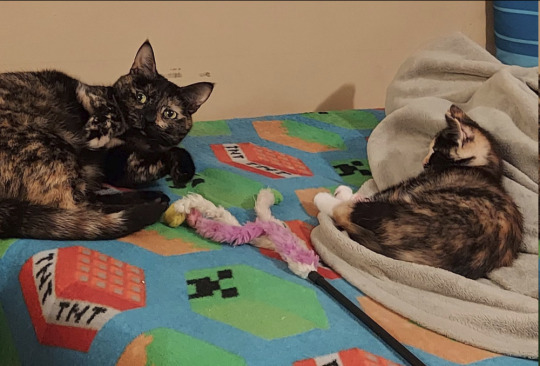

my fathers* p@yp@| is nuttyriv3r.
*if you send anything, please add a message saying "for memo" so my dad knows what its for. i am too young to have my own account.
if you cant use pp@|, but would still like to help, send me an ask or dm and ill ask my parents if they can set it up and then edit it into the post.
i had a bit here abt wantibg sonic frontiers and my friends got it for me (thank you guys aauuuuu) but yknow Im not opposed to people getting me other stuff on my wishlist too....... send me a friend request if u wanna gift me smth. :) 81998993
do not tag as anything. if my account gets nuked for this ill probably have a mental breakdown lmao.
also if you fucking like the post but dont reblog whats the point. liking does nothing on this website. you just look like a huge fucking dickface.
268 notes
·
View notes
Note
This is out of pocket but apparently back in the day, Koreans apparently used small horses ??? Like pony sized horses??? Like I know this is a serious game but can you imagine like picturing people hunting or fighting riding their horses and they’re the size of ponies??? Like imagine No-eul’s feet is just dragging the dirt because they’re too tall for their horse 😭
not out of pocket at all!! this is actually especially true for the mongolian horses that the shan horses are based on - they're more akin to ponies than the majestic stallions often protrayed in media. they have a much stockier build, but can gallop long distances without resting and are far hardier with the ability to survive by grazing in such a desolate environment. this alone makes them invaluable regardless of aesthetic preference
and those tiny ponies did help the mongols conquer the greatest landmass in history, so don't underestimate them!
ps. noeul's feet did drag on the first shan horse they tried to ride. they have since gotten a bigger horse, but that horse hates noeul almost as much as noeul hates them back
pps:

45 notes
·
View notes
Text
Love in the Big City Part 3 - Notes from a Reader (2)
Note 2: Enter Kylie
In part 3 of Love in the Big City Young finally introduces us to a character who, up until this point, we weren't aware had been present since the very first sentence: Kylie.
Kylie has been with Young since his military service, Kylie was with Young throughout his university years with Jae Hee, throughout his mothers 2 bouts of illness, throughout his relationship with Hyung, for five full years of his life.
And yet it is only now, in Part 3, that Young speaks her name.
And my question is why now?
Note 2.25: Perceptions of HIV in Korean Society
I touched briefly on the stigma and misinformation surrounding HIV in Korean society in this post here but I cannot stress enough how deep rooted those beliefs are:
"According to the 2015 national survey conducted by the Korea Centers for Disease Control and Prevention (KCDC) regarding HIV/AIDS-related knowledge, attitudes, and beliefs, the words most frequently associated with AIDS include “incurable disease” and “death” (25.3%), followed by “fear,” “horror,” and “danger” (11.5%)."
("Factors Influencing Young Korean Men’s Knowledge and Stigmatizing Attitudes about HIV Infection", Shim and Kim)
People living with HIV in Korean society face being tested for HIV without their consent (most Korean companies require their employees undergo annual health screenings), their medical information being shared without their knowledge (the illegality of the data breach is not always a barrier), medical professionals refusing to perform procedures, losing their jobs or being denied job opportunities, and being cut off from their family and friends should they choose to disclose their diagnosis due to poor understanding of what HIV is and how it is transmitted.
In addition to the social stigma, it's also important to understand that many people living with HIV in Korea struggle with poor self-perception and internalised stigma. A study conducted in 2017 found that:
"75% of all respondents felt self-blame due to their HIV status at least once in the past 12 months. 64.4% stated having feelings of guilt, and 59.6% reported having low self-esteem. 26.9 % also agreed with the statement “I had the feeling I should be punished”. [...] Only 13.5% stated that they experienced no negative feelings in
connection with their HIV status in the past 12 months."
("Unknown Lives: Initial Findings from the People Living with HIV Stigma Index in South Korea 2016-2017")
Surrounded by so much stigma and misinformation as they are, it is unsurprising that disclosure rates amongst Koreans are lower than in many other countries ("Predictors Associated With HIV Status Non-Disclosure in Korea", Kim and Woo) and that many chose not to share their diagnosis with any one but especially those closest to them (and especially ).
Note 2.5: Young and Kylie
Young's experience with Kylie closely maps on to the experiences of Korean PLHIV (People Living with HIV) discussed above.
Firstly, he is diagnosed with Kylie after being tested for it without his consent (p. 135) and lives with the fear of a repeat scenario, especially in relation to how such an infringement on his person would affect his ability to get a job (pp. 163-164 and again p. 176). In addition to this, he is exposed first hand (and quite possibly partook in prior to his own diagnosis) the social stigma that accompanies a known HIV diagnosis:
"When I drank with them, some guy rumoured to be poz passed by, our resident clown Eun-Jung would say, 'Everyone cover your glasses,' and we'd all burst out laughing." (p. 157)
(On a side note, in a study I can frustratingly no longer find it was observed that HIV stigma was not much lower amongst the queer community in Korea than it was in any other cross section of society and this passage feels like a nod to how the lack of easily accessible information and long held misinformation has effectively barred queer Koreans with HIV from finding support amongst their own community.)
Finally, as blasé and as care-free as Young tries to sound about his diagnosis, there are definitely signs that he, like so many others, suffers with feelings of guilt, self-blame, and the belief that "[he] should be punished". Kylie is the reason he expects Gyu-Ho to walk away from him as soon as he discloses his diagnosis, Kylie is the reason he tells Gyu-Ho to sleep around in Japan and subsequently accepts things when he believes Gyu-Ho is continuing to do so once back in Korea, "Kylie is [his] burden to bare and [his] alone" (p. 166) even when Gyu-Ho is the one who willingly "potion[s] out [his] pills and water every morning" (p. 178) and obviously has no qualms about helping Young manage his illness.
Kylie is the reason Young lets Gyu-Ho go:
"Kylie.
I had wanted too much. I'd already been given so much in the past three years. When you try to have too much, you're bound to stumble at some point." (p. 176).
Note 2.75: Why Now?
Young's experience with Kylie is the mirror of many Korean PLHIV and this includes his reluctance to disclose his diagnosis to anyone. He doesn't tell his mother, he doesn't tell Hyung, he doesn't tell the T-aras, and he doesn't tell Jae Hee.
It's only natural that he wouldn't tell us, the reader, either.
It's none of our business.
This is his most closely guarded secret, his most vulnerable point, the spectre that looms over his life and threatens to take everything away if he puts a foot wrong or lets slip to the wrong person.
The only person in the story he shares Kylie's existence with (beyond his doctors) is Gyu-Ho and it is because Gyu-Ho knew and stayed and embraced him that we know.
So why now?
Because up until Gyu-Ho, Young probably didn't feel able to talk about Kylie to anyone, in anyway. Gyu-Ho's acceptance of his diagnosis and his refusal to let it scare him away changed that; it created a space in which Kylie could be talked about, not without fear (certainly not) but with the knowledge that he wouldn't be abandoned or judged or rejected, that he would be sympathised with and loved and supported.
"Because whatever it was or wasn't, you were you."
#litbc book club#litbc part 3#i need to stop writing these before bed time I lose the plot half way through
14 notes
·
View notes
Text
oh to have a sickly sweet blueberry donut, a jalapeno kolache, and hot coffee
1 note
·
View note
Text
Thai BL: The Fanservice Problem...
Now here's the thing... I'm not here to offer solutions, though I do have proposed ideas that I may include at the end, but more just to breakdown my thoughts on fanservice in Thai BL.
First, we'll start with a general definition of fanservice:
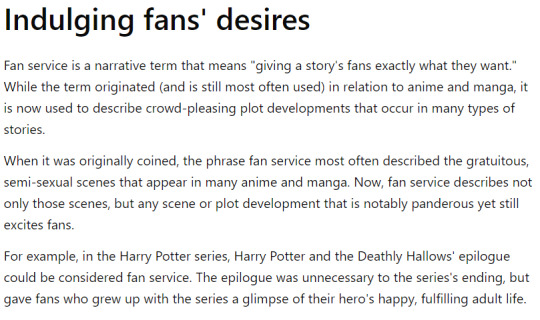
I think that the connection to print media originally is important when we're looking at modern BLs series and movies, as they have a base in print media. In Thailand you have niyaai waai (“Y” novels), kaatuun waai (“Y” comics), as well as the Japanese Yaoi Manga and Korean BL Manwha that are very literally the basis for numerous series, in addition to original story BL series.
In terms of the fanservice we see in relation to Thai BLs...that goes a step further, moving out of the fictional world and into the real one. The fanservice we're now talking about is actors whose characters are couples often being paired for promotional events and they are expected to on some level act similarly to their onscreen characters. This includes individual character behavior, but also having the two actors behave in a way that could be (and is intended to be) read as romantic by fans. This includes a lot of different actions, but skinship (which I'll breakdown later), general chivalrous behavior (like serving your partner first), going on 'dates' specifically with the intention of presenting those experiences on social media. The important part about fanservice in this context is that it is always done with the intention of being seen by fans. It doesn't matter if it's a publicly streamed and hosted event, or just an Instagram post, if it's made public by the actor, or their company, it's intentional and it's likely fanservice.
What is the purpose of fanservice then?
Profit, essentially. For these companies, who both produce BL, but also often represent these actors as a talent management agency, there's a profit to be increased by presenting actors in this way. Having these 'couples' become popular to fans means continued view of future series, but also means that they can set contracts to have them promote various products. You will see the actors often promoting the same products that are used in product placement in their series. A brief list off the top of my head: the Lays chips, whatever that flavored water or juice they're always drinking in Wabi Sabi shows, Epson printers (I think it's Epson), various skin-care serums, L'Oreal hair color, the menthol inhalers, the list is likely endless. In the series, product placement gives them direct funds to actually make the shows, but by having the actors promote the same products, these companies are getting a percentage of that payment also because they are also working as representation for the actor.

To make easy numbers, while Gemini's contract might have been $1000 for this post promoting this brand of Ramen, because GMMTV set-up that partnership/contract, and they represent Gemini as talent, they'll get $200 for themselves, Gemini takes home $800 minus taxes. Again, these are made up numbers and I truly hope that no one is actually getting a 20% commission, but I trust none of these companies, so I honestly wouldn't be surprised if it was higher.
But because this is genuinely how a good majority of production companies gather capital to be able to make shows, the more popular a ship is can directly equal out to how many ad partnerships they can create for them, as well as the price they can charge. In order to give an approximate view, I chose two actors from the same company, Domundi's Zeepruk and Tutor. Because of Zee's vastly higher popularity and the wide difference in follower counts I wanted to have a third actor for comparison, and so I chose PP Krit. It's not an exact match across the board, but I think gives a good view of scale. Here is the break down of their last 30 Instagram posts:

Now I'll start with some definitions of how I categorized things. Ads are things that have clearly been shot specifically to promote a product, and often have instructions in the captions on where to purchase, or specific benefits about the products. Sponsored posts are any posts where they tag a brand in the caption, but it doesn't have the detail of the Ad posts, or posts of them at a place or event where they were invited to attend by the brand for the purpose of being photographed there. Self-promotion is trailers, photos from their series, or fan events. And finally candid is any pictures that are just there for the fun, thirst traps, vacation pics, pics from behind the scenes of events, and while few of these are actual 'candid' pictures, they're not for the purpose of promoting a 'brand' in particular (outside of the fact they are all clearly intend to promote the 'brand' of the actor). The Couple+ 'whatever' is the same as listed above, but is for any posts that include the other half of their acting pair (meaning Yim, Nunew, and Billkin). The Couples Candid is only found once on a post from Tutor, and is clearly taken when they were filming their Tiktok BL short, but there's no tags for the short series, nor instructions on where to watch it, so I'm calling it a candid post. For PP Krit, there are two posts that I'm categorizing as 'Self-Sponsored' as one is for PP's own brand (Caremate) and the other is for a Car Repair shop owned by a family member. Later when I do math with this information those posts won't be included in the 'potential profit' as I can't guarantee he was paid, and if he was I doubt he charged his standard rate.
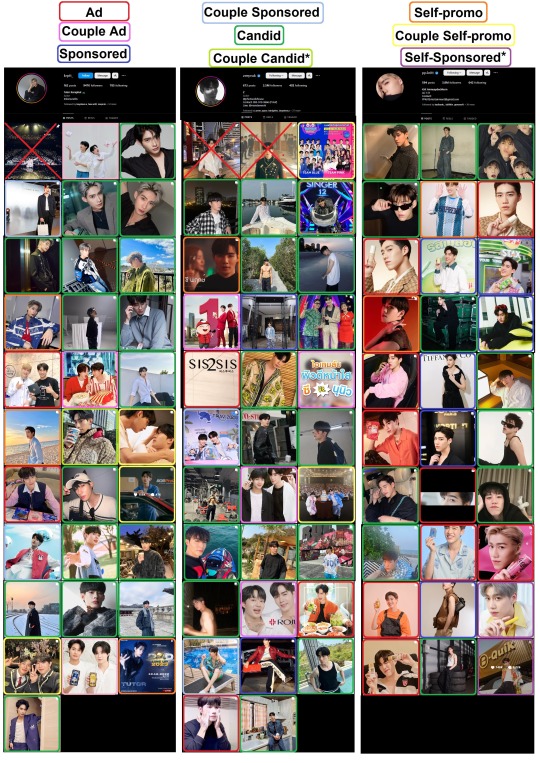
Looking at Tutor 7/30 of his latest Instagram posts are ads/sponsored and 5 of the posts are 'couple' posts, meaning they also feature Yim. For Zee 10/30 are sponsored and 5 of those are 'couple' posts also featuring Nunew. It's also relevant that the earliest post I counted of Zee is from April 8, 2023, for PP is April 6, 2023, and the earliest one from Tutor is from December 6, 2022. Given that we have about 30 posts from Zee in 2 months, I'm simply not going to scroll back to December to see what the comparison is time wise, but if the ratio remained the same 10/30 in 2 months, that would equal 30/90 over 6 months, with 15 being 'couple posts'. So you can see the difference made in terms of money brought in by more 'popular' actors. If we stick with our $ 1000 per post cost for individual posts, and double that for 'couple posts' ($ 1000/per actor) that's $ 45,000.00 total brought in and $ 9,000 kept by Domundi as commission. For Tutor, in the same 6 month span, he (and partially Yim) brought in $ 12,000, with Domundi keeping $ 2,400 as commission. That's a marked difference for Domundi. And completely ignoring the very high likelihood that Zee is probably bringing in 2 to 3 times what Tutor his because of his popularity and longer time in the industry. If we look at those same number with PP, he has 15/30 posts that are Ad/Sponsored, at $ 1000 per post that's $ 15,000 directly in PP's pocket essentially, since he has his own independent company that represents him. Which causes it's own complications, as he has many more sponsored and ad posts on his company account, many of which he also appears in with Billkin. (Sidenote: I actually find it fascinating that there's no sponsored/ad posts featuring Billkin on his personal account, in fact it's surprisingly rare for him to post Billkin on his account at all outside of stories, at least recently.) So all of this to say, you can see how having these actors promoted in pairs is more profitable for the company as far as ad promotion.

The additional benefit is we're looking at is fans being able to follow pairs through different stories. Like many fans of media, we will often find actors we enjoy, and then proceed to actively work to watch different projects they are in because we like them, find them to be incredibly talented, think they're handsome, etc. This general expectation is capitalized on by companies by having pairs act opposite each other in multiple stories. At this point for ZeeNunew and TutorYim, we've seen both in the Cutie Pie series, but both also have future work to look forward to. I've previously mentioned the BL Tiktok shorts with TutorYim, and they are going to be the leads in Middleman's Love, which is due to come out at the end of the year. ZeeNunew have a new film, After Sundown, as well as new series The Next Prince, and will be returning as Lian and Kuea in Naughty Babe as second leads. All of these future shows and series are produced by Domundi, meaning they will get a portion of profits from appearances, merchandise, etc. that goes along with those series, as well as the potential ads or product placement in the shows. There’s also a high likelihood that product placement in Naughty Babe will garner a higher price, as it’s a spin-off of an already popular show with already popular actors, where Middleman’s Love, as the first series showing Tutor and Yim as leads, would be ‘cheaper’.

Fanservice as perceived by Fans
Now this can be difficult to break down, because it all depends on the fan. Fanservice as a concept is widely understood by Thai fans. They actively recognize that it exists, and they enjoy it. Other East Asian countries also recognize that Thai BL employs fanservice, and while they accept and enjoy it, they generally do not want to see the practice taken up by BL actors in their own country. In fact, it’s generally rare for actors in BL series in Japan, Korea, Taiwan, etc., to have actors paired for multiple series, outside of appearing as the same characters over various series. The first to come to mind is the characters of Bo Xiang and Zhi Gang from HIStory 3 having in a small guest appearance in HIStory 4, played by the same actors, Wilson Liu and Zhang Han Yuan. Because they are rarely kept as an acting pair, fanservice outside of the actual scripted media is not expected and would have little benefit.
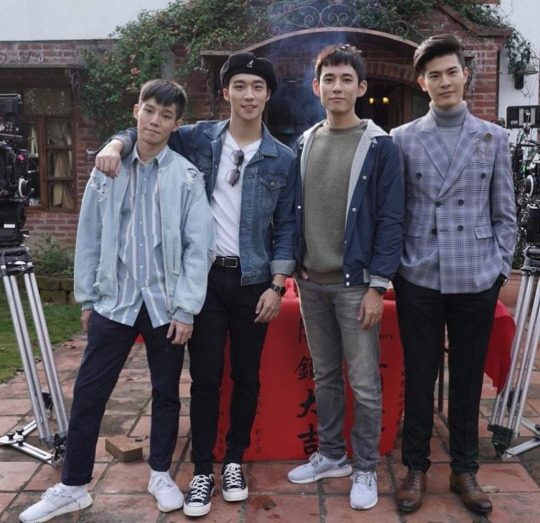

Moving away from East Asian, very particularly to Western, audiences where fanservice is something that many media consumers ONLY expect to see in the media itself, never outside of it. Speaking as a western fan myself, I was genuinely surprised at the amount of ‘bonus content’ that is the expected norm with Thai BL’s. The fan meets, sponsored events, concerts, the vlogs and excursions, the behind-the-scenes content, all of it is generally beyond what I am used to as an avid media fan. Director/or actor commentary, behind the scenes documentaries, while popular generally fell out of favor with the decrease in popularity of physical DVDs, as it was originally intended to be a selling point of purchasing DVDs instead of VHS. (But honestly, that’s a different post.) And observing the behavior as someone with the perspective of a western fan, it is both the requisite behaviors of fanservice, as well as the difference in cultural norms, that causes confusion and blurs lines. The number one thing that is seen as surprising by western fans of East Asian media, is skinship, particularly skinship between two men.

The concept of skinship isn’t directly unfamiliar to western people but is generally something that occurs between direct family members (parent-child or siblings) or between romantic couples. In East Asian culture it’s moves beyond familial and romantic bonds to include all platonic bonds as well. You can expect to see skinship practiced between any two people who are close and feel affection for each other. So, in the context of fanservice and Thai BL acting pairs, not every occurrence of skinship (hugs, holding hands, sitting especially close, playing with hair, fingers, etc.) is fanservice, but it is a tool in the fanservice armory. Given that it is a cultural norm, and that many of these actors are at least well known to each other and friendly, it is likely an easy one to enact in the name of fanservice.
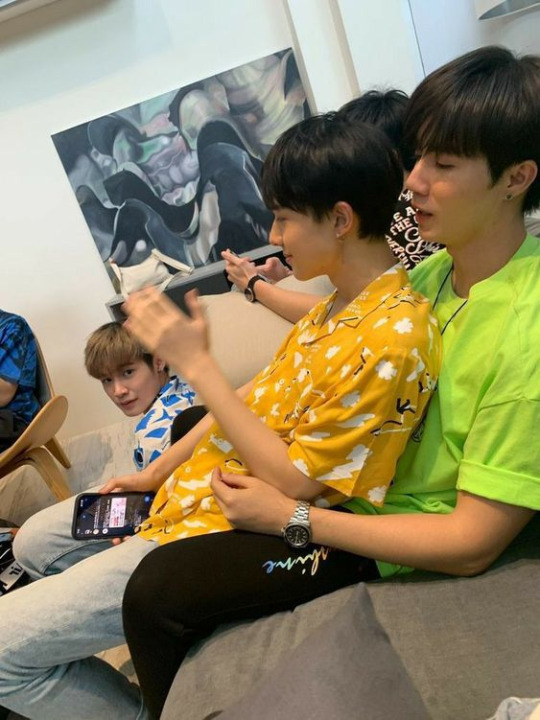

Watching these interactions through a western lens however, causes the viewer to more easily see the behavior in a romantic context. And there’s honestly a lot of factors that play into that, the biggest being ‘masculinity ideals’ where most western cultures don’t promote or encourage men to show affection outside of family (generally strictly parents or children) or romantic couples. Then you also have good ol’ homophobia, men don’t want to show too much affection towards other men for fear of being seen as gay. And this is a very broad sort of description, as the ‘norms’ for what is acceptable platonic contact will of course differ in immigrant families, or indigenous communities, or among black Americans, even just geographically. I’m just a white person speaking from their own experience and observation, though I do have the benefit of knowing, working with, and interacting with a remarkably wide variety of humans.
Why is Fanservice a ‘Problem’?
If it’s widely understood that fanservice is an extension of the acting, that it’s very often something required by contract, that it’s not an indicator of a romantic or sexual relationship, then it’s not a problem. But that’s not widely understood. And that lack of understanding or even the preference of fans to ignore that knowledge has created a problem in the Thai BL industry. We’ve watched over the last several months personal attacks on actors for ‘queerbaiting’ (which is a term intended ONLY for fictional characters), fan clubs being upset over actors going to appearances alone or without the other half of their acting pair, personal attacks on close friends of actors (very particularly female friends), and even the attacking of an employee and friend of an actor for ‘pushing the fanservice agenda’. What is intended to be cute and fun, is turning into something that is having real life negative effects, both on the actors themselves, but also people connected to these actors. It’s also spreading beyond Thai BL, with fans (mostly western fans) being upset at non-Thai actors for not engaging in fanservice.
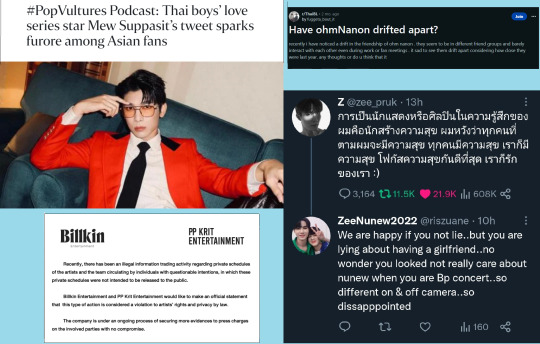
Fanservice, by virtue of it being monetizable, also indirectly exploits the Queer community. This is something that’s recognized and often brought up by western fans, as culturally, we’ve reached a point where the expectation is that Queer media will cast Queer actors in roles. This is done specifically in an attempt to help Queer actors to get more roles in the entertainment industry in general (which is a worthy goal) but is also only considered in the context that while being an out Queer person in the West is easier/safer than in many other places around the world. Many Western nations have not only marriage equality, but anti-discrimination laws that give additional protection to Queer people. And even with these laws there are still hundreds of thousands of Queer people who don’t feel comfortable being openly out in all aspects of their lives. In many East Asian countries, legal protection against discrimination is not guaranteed, and even in those countries with anti-discrimination laws, there’s often caveats. And that’s completely setting aside societal discrimination, which would be a top concern for these actors. Taking Thailand specifically, homosexuality isn’t illegal, but there are no laws in place for marriage equality or even the recognition of same-sex relationships. While there are anti-discrimination laws in place, those rest on the ability of a Queer person to PROVE discrimination, which opens its own can of worms.
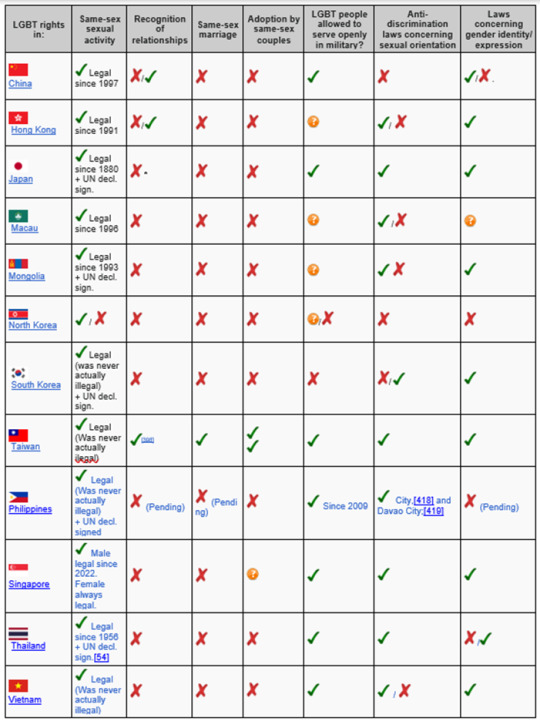
So, what I’m saying in regard to monetizing or exploiting the Queer community, is that it is understandably frustrating for actual Queer people in Thailand to see actors ‘performing’ queerness through fanservice, and being rewarded for it, while many regular citizens are living in situations where being out could be damaging to their livelihoods, cause loss of friendships or family relationships, and even put them in physical danger. Now, are some of these actors part of the Queer community? We know for certain that some are, we know for certain that some aren’t, but the vast majority we don’t have any concrete knowledge of their sexuality or Queer identity (and we are NOT entitled to it!). But it would be understandable and reasonable, given the current political and societal landscape of many of these countries, that any actor would have to very seriously consider potential ramifications of being out. Like any Queer person anywhere, there’s a laundry list of considerations that have to be addressed. Top of the list is ‘Would I be physically safe if I came out?’ but you also have to consider possible negative effects on your career, the potential limitations if you want to move outside of BL to mainstream content. We also have VERY clear examples of societal discrimination and hatred towards openly Queer actors, both from ‘local’ fans as well as international fans. But we do very often see BL actors being openly supportive of their local Queer community, promoting proactive voting in elections, and even this past week making appearances at PRIDE events. This is in addition to potential work they are doing quietly to support the community, like donating to non-profits that work to assist or advocate for Queer people, both individually and as a whole.

So, What’s the Solution?
I have no idea. I stated in the very beginning that I’m not here to give solutions. (That’s above my pay-grade.) But I do have some ideas. Now, these are not going to be the easiest for many BL fans to hear, I’m sure. They bother me too, to be honest.
I think an excellent first step is to have companies be upfront about whether fanservice is part of actor’s contracts. We know for a fact that BOC does not contractually obligate fanservice, but any other production or management company that works in BL more than likely does, though the scale and level of expectation may vary. I don’t 100% know if this would actively work, at least initially, because the actors themselves are aware that fanservice can help to raise their popularity, which enables them to be contracted for ads, sponsored social media posts, and appearances, which is how most of these actors make the majority of their money, NOT through the pay they receive for their actual acting work. So, they may perform fanservice as it’s currently known even if it’s not contractually required, but I do at least prefer the actors being in control of the level of fanservice they take part in, if any.
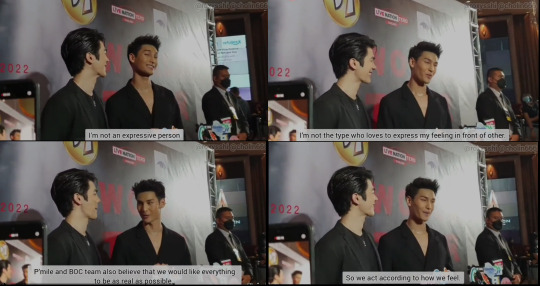
A second step, or option, is to have companies not solely send actors to events in their ‘pairs,’ and not keep them in the same pair for multiple series. I think if a company took the step and intentionally mixed up their ‘pairings’, specifically those from lead roles, then we would see less direct attachment to the ‘pairs’ and more to the actors as individuals. This could help in the long term prevent the fallout we’ve recently seen from acting pairs “breaking up,” very specifically the hateful attacks we’ve seen directed at the separate parties. But I think it could also prevent the fans from ‘choosing sides’ as I’ve also been seeing frequently in online BL spaces. In other direct online discussions, I’ve likened it to having a friend couple break up, and all of the other friends in the group essentially have to pick a side. Sometimes, you knew one person before they were a couple, and you stick with them. On occasion, one of the people will have done something terrible, and even if you knew them first, you stick with the other person. But often these are people who became your friend already a couple, and neither really did anything wrong, they just grew apart…so is it right to throw one aside in favor of the other?? Or is it more reasonable and realistic to maintain friendships with both separately? In a similar fashion, when BL pairs go their separate ways, isn’t it more reasonable to continue to follow them separately, assuming you find them both to be equally talented, versus putting one aside?
As a supplement to my suggestion of not maintaining static pairings I made this lil picker wheel with the actors at GMMTV...
…to be honest I’m quite intrigued by the idea of First and Gun. Both are phenomenal actors. I can picture the vibe of a potential story, based mostly on my desire to see Gun as a homme-fatale. PICTURE IT: Gun is a sultry assassin, beautiful and deadly, First is the ever-weary federal agent on his tail…but he begins to find an interesting connection amongst Gun’s ‘victims’, they’re all users and abusers, arguably far more detrimental to society than Gun himself. As he tracks down Gun and learns more about him…he begins to fall for him. In the end…does he stay true to the commitments he made to his country, or does he breaks those promises in favor of following his heart??
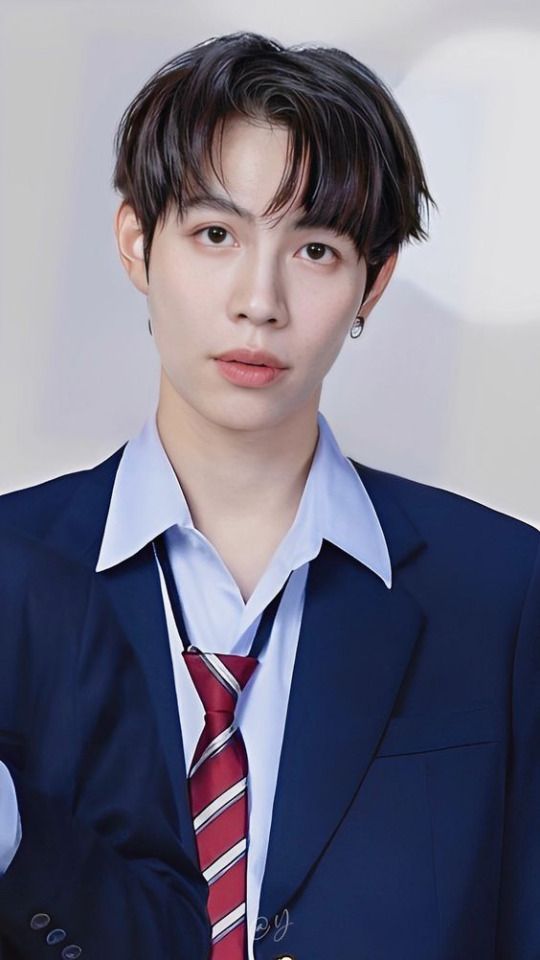
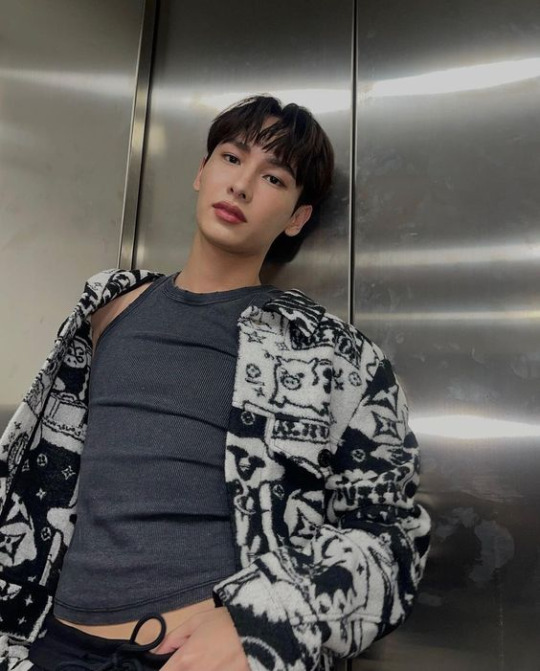
Anyway...this was 3,500 words. Hopefully some of them made sense. PLEASE share your thoughts, if you have any on this subject. I'd be especially interested if you are outside of the US.
#Thai BL#Fanservice#BL Drama#ZeeNunew#TutorYim#BillkinPP#First Kanaphan#Gun Attaphan#I don't know what other tags to put#But I hope you appreciate this#It took me 6 hours#Love Y'all#Tong Thanayut#Domundi#GMMTV#WabiSabi#Be On Cloud#Me Mind Y#Dee Hup House
64 notes
·
View notes
Note
Who are your top 10 actors in thai bl?? I've heard that thailand is the weakest when it comes to acting in bl so is it true??? Bcuz I've watched so many bls from thailand and the acting is not as atrocious as I've been led to believe. Or maybe it's just me🤔
Ooo, good question. I'm not going to worry over this one, jut pick a bunch off the top of my head.

My Current Top 10 Thai BL Actors
Nanon
Khaotung
Saint
Ohm
Talay
Fluke P (The Shipper)
First
Gun
Fluke N (although he's often type cast)
Perth T (his flaw is sexual chemistry)
I didn't pick anyone who I haven't seen play multiple roles.

My definition of good acting?
Those who can:
cry and smile/laugh well (so execute the full scope of emotions),
have on screen chemistry (with BL partners but also friendships, older generations, other cast members),
execute body language (not just facial expressions),
have the capacity to be somewhat of a chameleon (AKA broad range),
have no fear of being ugly on screen (the ability to put aside ego).
Under those circumstances (particularly the last two) there a many Japanese and Taiwanese actors who satisfy my particular criteria better than Thai or Korean actors .
Ones I considered listing, but am not familiar enough with their range to include:
Net
PP Krit
Ones to watch out for?
Fourth (My School President)
Santa (My Only 12%)
Noh (Nitiman)
James (Bed Friend)
Favorite Thai BL Character Actors
versatile actors amongst the BL actors
(source)
#asked and answered#thai actors#favorite actors#nanon korapat#khaotung thanawat#saint suppapong#ohm pawat#lay talay#fluke pusit#first kanaphan#gun atthaphan#fluke natouch#perth tanapon
107 notes
·
View notes